- Fickle market narrative chases market action
- Dollar sells off, suggesting monetary tightening is priced in
- Yields recover
- UK GDP numbers are reported on Friday.
- Also on Friday, earnings season kicks off with results from big US banks.
- US retail sales figures are released on Friday.
- The FTSE 100 was little changed
- The STOXX 600 fell 0.3%
- Futures on the S&P 500 were little changed
- Futures on the NASDAQ 100 fell 0.1%
- Futures on the Dow Jones Industrial Average fell 0.1%
- The MSCI Asia Pacific Index was little changed
- The MSCI Emerging Markets Index was little changed
- The British pound rose 0.3% to $1.3739
- The Dollar Index was little changed
- The euro rose 0.3% to $1.1471
- The Japanese yen was little changed at 114.56 per dollar
- The offshore yuan was little changed at 6.3661 per dollar
- Britain's 10-year yield increased two basis points to 1.16%
- The yield on 10-year Treasuries was little changed at 1.75%
- Germany's 10-year yield advanced two basis points to -0.04%
- WTI crude was flat
- Brent crude was little changed
- Spot gold fell 0.3% to $1,821.24 an ounce
Key Events
On Thursday, futures on the Dow Jones, S&P 500, NASDAQ and Russell 2000 were trading mostly in the green, while an array of global indices were trading lower after US inflation data released yesterday intensified debate on whether the Fed will hike rates in March.
The dollar and gold both slipped.
Global Financial Affairs
In Europe, the STOXX 600 fell at the open, ending a two-day rally in which technology and miners offset declines in travel & leisure, and consumer products. The Financial Times is reporting that yesterday's gain by the pan-European benchmark was a "relief rally" as investors had been expecting the 7% YoY increase in the US consumer price index (CPI) and believe it will not hasten the Fed's timetable for reducing its emergency stimulus and raising rates.
Earlier, most of Asia closed in the red. The selloff was also attributed to Wednesday's US data. But Asian investors seemed to think that the figures would reinforce the Fed's resolve to raise interest rates sooner.
Surging Omicron cases in the region also put traders on the defensive. Total cases across Japan had reached 10,000, the most in four months, while China has introduced new lockdowns in its zero-COVID strategy, resulting in the Nikkei 225 and Shanghai Composite both sliding around 1%.
The 10-year Treasury yield recovered yesterday after a 3-day decline. The increase in demand for Treasuries after traders had unloaded holdings sent yields back up and into gains. Given that the current main driver is the interest rates outlook, it appears that most of the money is betting that the Fed will not tighten policy faster than already outlined after yesterday's US inflation figure. That view, however, is prone to change as signalled by the technical chart.
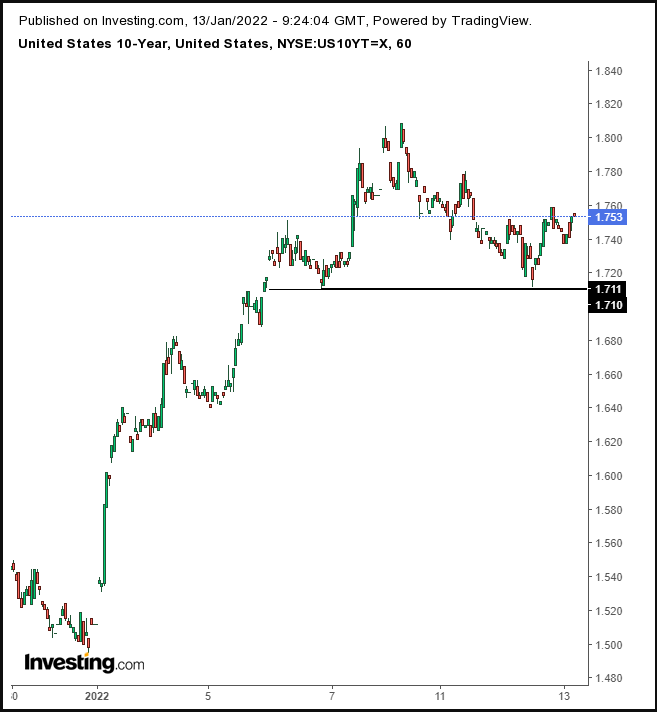
Yields have been trading in an H&S pattern on the hourly chart. A fall below 1.7% will put rates into a short-term downtrend or a short-term uptrend for Treasuries.
The reaction of currency traders has been noteworthy, as is illustrated by the performance of the dollar.
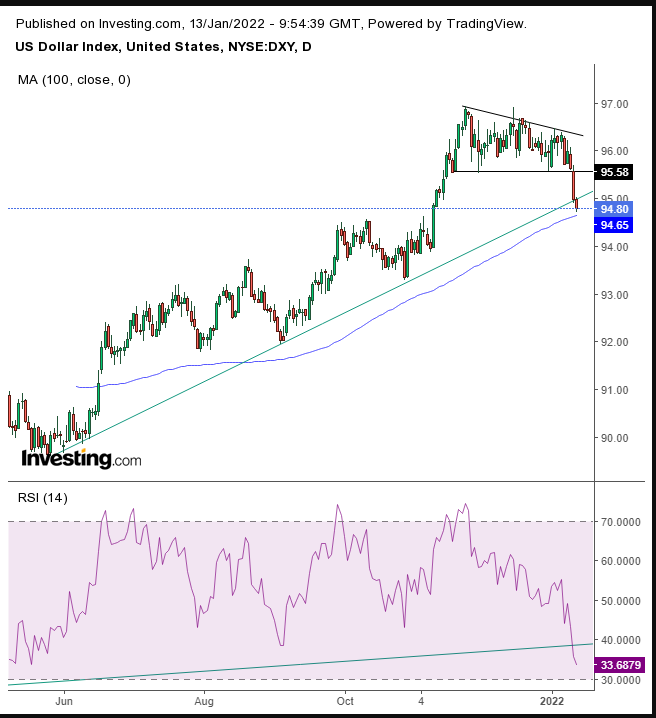
Bears finally settled a pattern that had been unstable, decisively turning it into a Descending Triangle, pushing the greenback lower for the third straight day. This helped the price cut through the uptrend line since the May low. While the US currency has found support above the 100 DMA, for now, the RSI's fall below its uptrend line suggests the price might do the same to the 100 DMA.
The dollar's slump illustrates a fascinating development. The Fed has become the most hawkish it has been in a long time, and the USD is falling. It seems then that currency traders believe that the CPI accelerating at its quickest pace since 1982 will not result in earlier interest rate hikes.
The pound sterling climbed for the third day in a row.
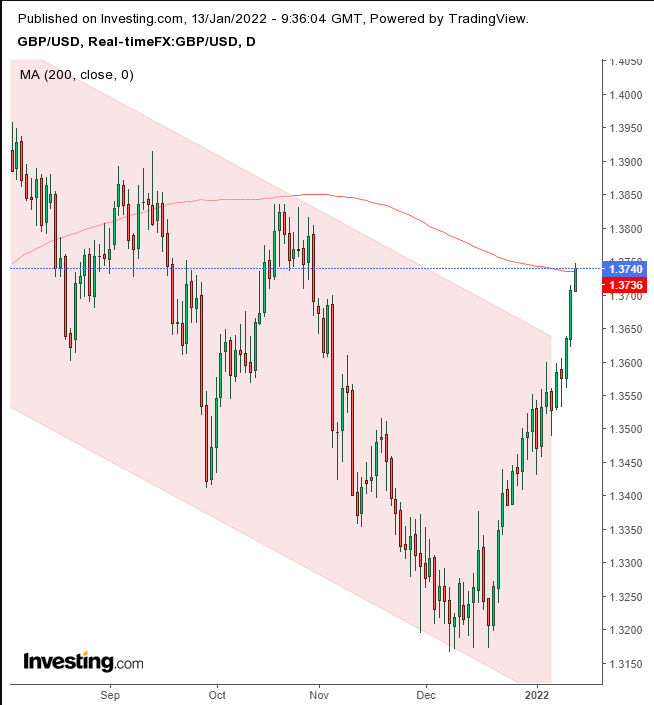
The price is breaking through the top of a falling channel since the May peak, and is now struggling with its 200 DMA.
Gold declined, ending a three-day advance. The slip is noteworthy considering that the dollar weakened and equities are lower—two events that typically boost the safe-haven metal. Perhaps, technicals are controlling the trade.
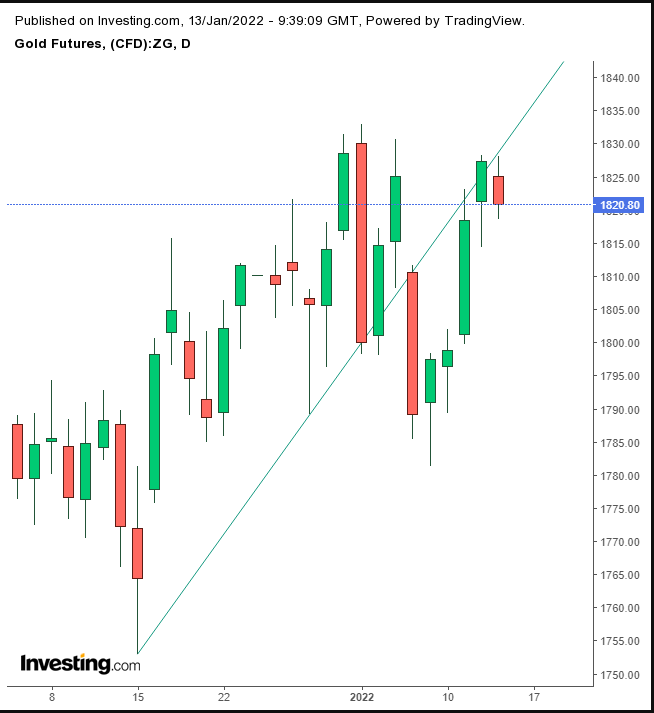
The yellow metal found resistance where the broken uptrend line meets with the Jan. 3 peak.
Bitcoin was flat after fluctuating between gains and losses amid a debate on the cryptocurrency's status as a hedge against inflation. There is also a technical explanation.
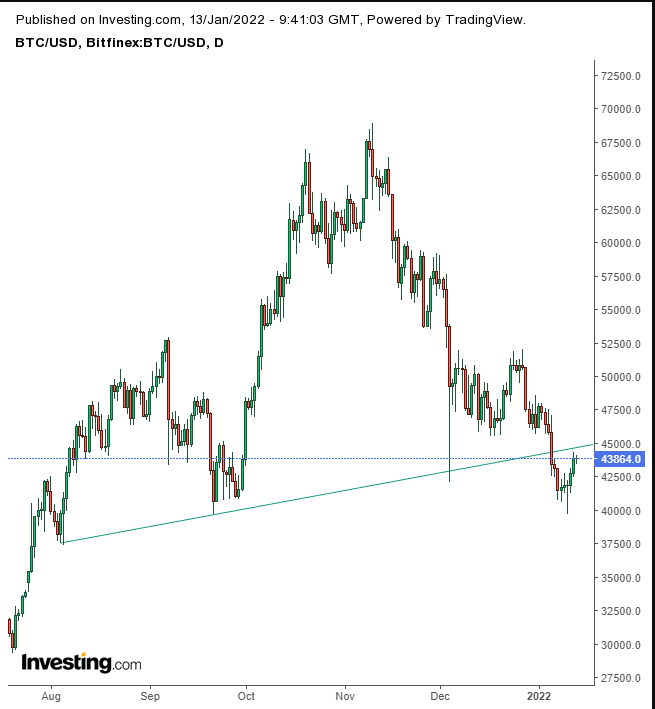
The virtual coin is entering the vortex of supply and demand as it nears the neckline of a massive H&S.
Oil was little changed after some volatility as traders considered the impact of the coronavirus on global travel and, along with it, demand. As the energy commodity rises, there are a number of fundamentals currently in play that could drive prices higher, or lower.
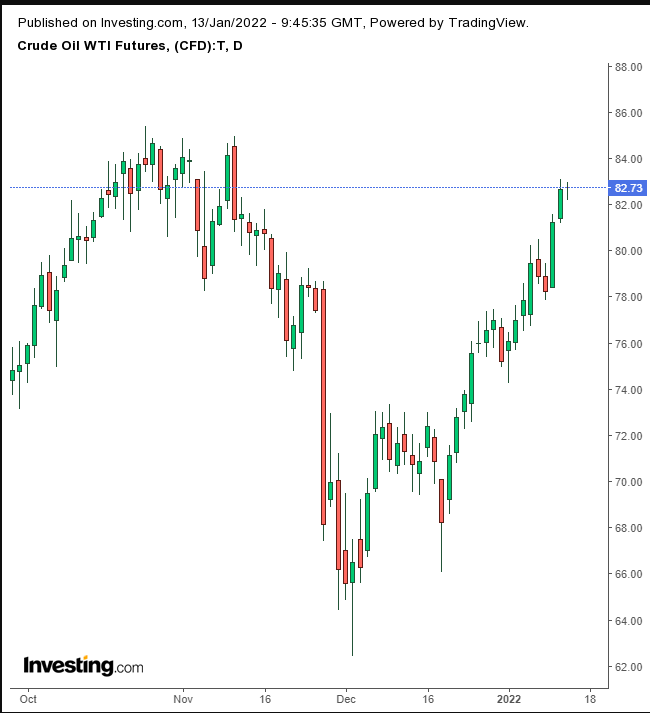
From a technical standpoint, oil bulls are contending with the memory of the asset's crash which wiped out a quarter of its value the last time a barrel of oil reached these levels back in October.
